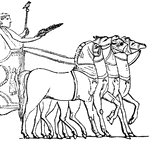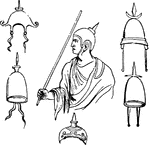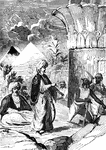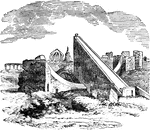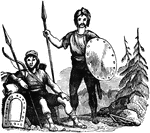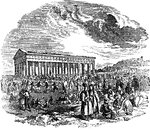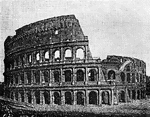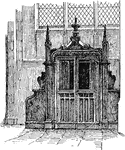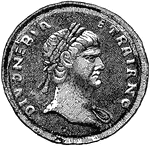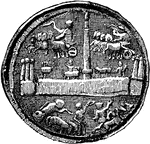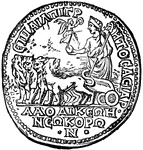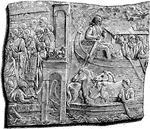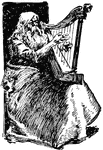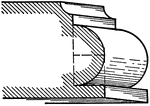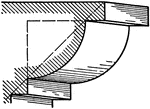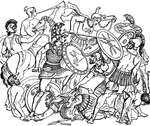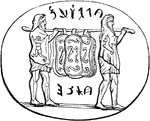
Ancilia
"According to the ancient authorities, it was made of bronze, and its form was oval, but with the two…

Tunica
"Tunica, an under-garment. Roman. The Tunica of the Romans, like the Greek chiton, was a woollen under…

Turibulum
"Turibulum, a censer. The Greeks and Romans, when they sacrificed, commonly took a little frankincense…
Straight buccina
"A copy of an ancient sculpture taken from Blanchini's work, it still retains the original form of the…

Vestales
"Vestaes, the virgin priestesses of Vesta, who ministered in her temple and watched the eternal fire.…

Umbraculum
"Umbraculum, Umbella, a parasol, was used by Greek and Roman ladies as a protection against the sun.…
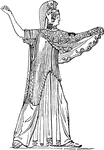
Minerva with aegis
"According to ancient mythology, the aegis worn by Jupiter was the hide of the goat Amalthea, which…

Aegis
"A breastplate covered with metal in the form of scales, not used to support the shield, as was done…
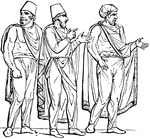
Sagum
"The sagum was open in the front, and usually fastened across the shoulders by a clasp. The form of…
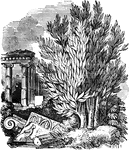
Ancient Persia
"Ancient Persia was among the great empires that figure in the early history of mankind. Little of their…
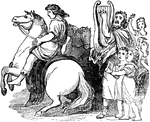
Victors at the Olympic Games
"From a very remote period, the Greeks had been accustomed to engage in contests of strength and agility…
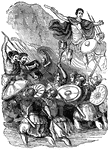
Caesar in England
"All histories of England commence with the invasion of Julius Caesar, the earliest event in that quarter…
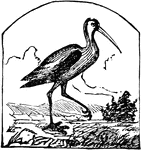
Ibis
A genus of wading birds, one species of which was regarded in ancient Egypt with a degree of respect…

Guy Fawkes and his associates
"One of the most extraordinary events in the history of England is that commonly known by the name of…

Raised Fillet
A roman moulding, called Raised Fillet. Its projection is generally made equal to its height.…

Bead
A roman moulding, called a Bead. It is a molding consisting of a semi-circle on a flat surface.…

Scotia
A roman moulding, called a Scotia. It consists of two quarter circles one of which has a radius…
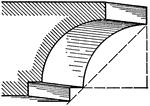
Cavetto
A roman moulding, called a Cavetto. It consists of a quarter circle with a sunk fillet below.…
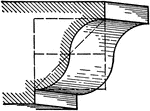
Cyma Recta
A roman moulding, called a Cyma Recta. It is a moulding of double curvature and two fillets.…

Cyma Reversa
A roman moulding, called a Cyma Reversa. This like the cyma recta, is composed of two quarter…

Pluto, Persephone, and Mercury
"Mercury was sent, accompanied by Spring, to demand Persephone of Pluto. The wily monarch consented,…

Faunus
"Sylvanus and Faunus were Latin divinities, whose characteristics are so nearly the same as Pan that…

Druids
"The Druidical system was at the height of at the time of the Roman invasion uner Julius Caesar. Against…
